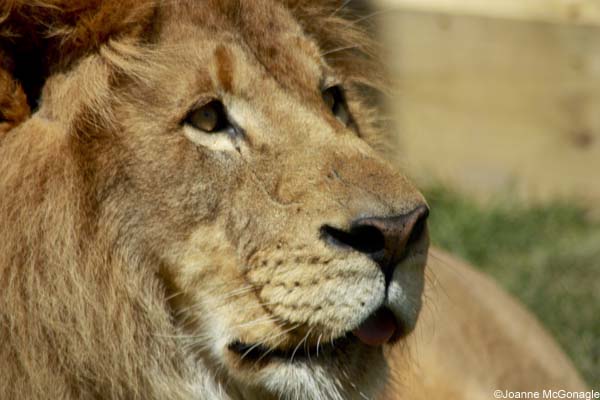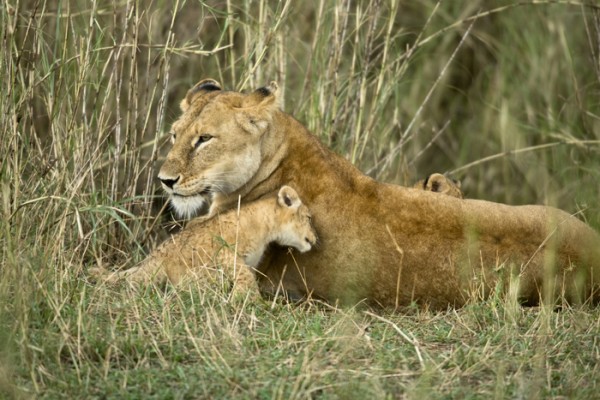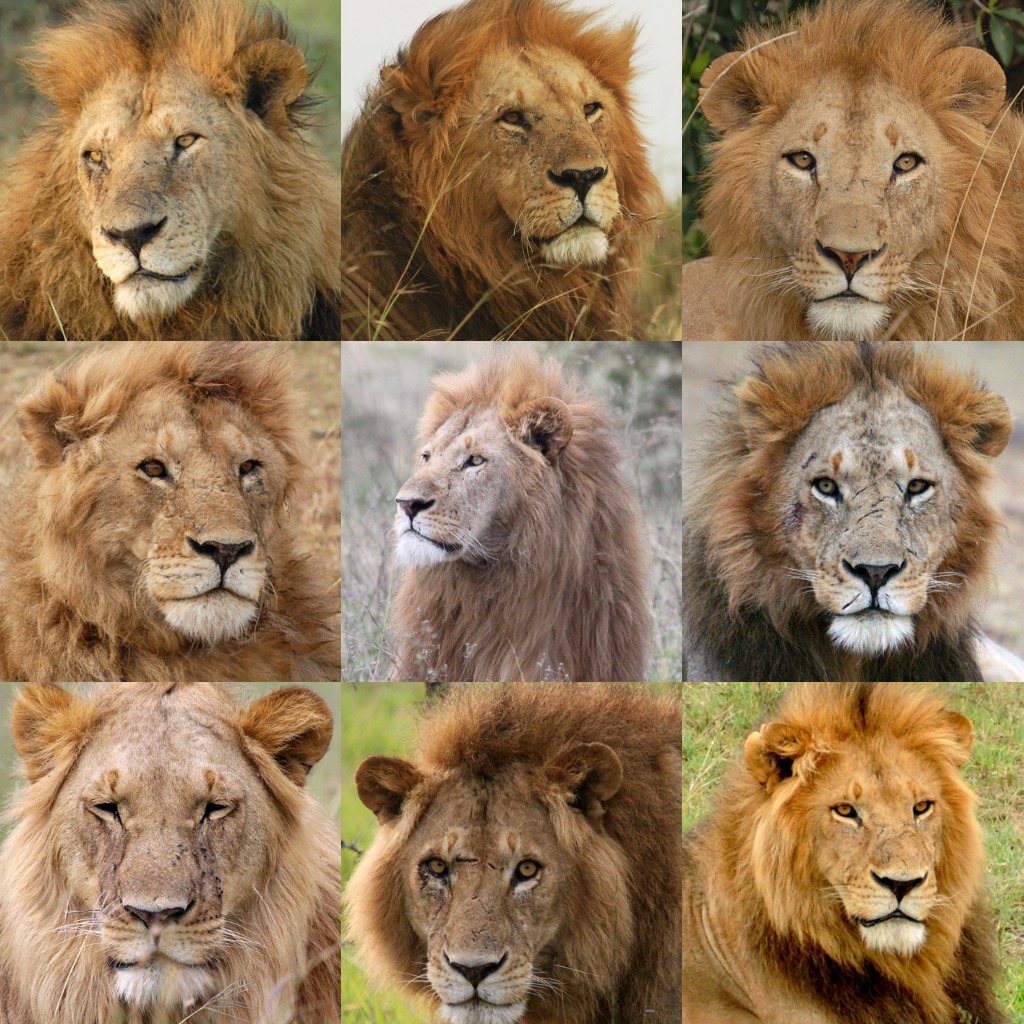
How to AGe a Lion and Why Age Matters
How do you recognize an old lion? Knowing the age of a lion is important for research. An African lion’s age is a critical metric for accurately estimating wildlife life history and behavior. Knowing an animal’s age allows us to understand reproduction, survival and life span, movement and population size. Successful conservation management of wildlife depends on understanding each individual’s social and biological role, and that is linked to age.
Scientists use population models based on the age structure of a group to help understand how different management scenarios or environmental stress could affect the future of a species. Population models enable conservationists to predict a species’ population size based on data from including conception rate, birth rate, survival of young, age at puberty, territoriality as well as other characteristics. An animal’s age is important to understand the future of a single populations and in the case of threatened species like the African lion, for the entire species.
Lion researchers know that age is an important metric so when they collar individual lions, they must pinpoint the age of the lions in the study to be able to understand lion behavior in general. Critical to lion conservation is ensuring lions have the natural resources and the protection they need at different phases of their lives.

Old Lions Are Important to the Pride’s Survival
Lions are the only social big cats. A pride consists of 4-5 adult lionesses, their dependent cubs and a temporary coalition of males. The male lions are key in defending the pride against invading males by roaring, patrolling, scent marking and aggressively defending against male intruders. A new male will often kill cubs in order to bring lionesses into estrus so they can produce offspring. Infanticide ensures the new male will pass on his genes and reduce the offspring of the previous pride males.
An Older Lion Loss Negatively Imacts the Pride
This social nature of lions means that lion populations are negatively impacted by the loss of males. When adult male lions are hunted, the invading new males will cause a high rate of infanticide and when the hunted males were sub-adults less than 4 years old, they had not had the opportunities to reproduce, impacting the long-term stability of a population.
The Science of Aging Lions
The science of aging lions developed in part out of the need for reliable indicators of age to manage and try to make trophy hunting sustainable. If trophy hunting will not be stopped, it is necessary to at least take steps to save the lion population from further decline. Research showed that to be sustainable, trophy hunting should target lions in East Africa older than 6 years and lions in southern Africa older than 8 years.

Lion biologists have used natural markings like whisker spots, ear notches and scars to identify individuals, but there was not an understanding of how physical appearance changes with age. Panthera’s Postdoctoral Researcher, Jennie Miller, PhD, found 5 traits that noticeably change with age.
How Old Is That Lion?
Male lions in the wild can live up to 15 years of age. As they age, 5 main physical traits change:
- Nose darkness. Lion noses change from bright pink to mottled gray gray with age. Scientists are not sure why their noses develop pigment with age.
- Mane Growth. Perhaps the most obvious marker a male progresses from a bald cub, to a Mohawked teen to mop-topped adults to thin-haired elders.
- Scars. Older lions pick up more battle scars as they age.
- Teeth. Lion teeth become more yellow and worn down with age
- Jowl Slackness. a lion’s bottom back lip might hang lower at age 7 or more.
Train and Test Yourself The AgE Of a Lion
I think this is a clever way to engage lion lovers all over the world and to create conversation about lions. What do you think? Will you try?
Let us know when you do. Thank you for caring about all cats big and small.
have this saved in email so I can take the test; and totally off topic
…to a degree… I camera CATalogue for Panthera at Zooniverse; spotted a lion, a male, on Sunday; felt like I won the lottery !! ???
Super Hurrah!!!! How exciting. That is an interesting and fun project to participate in, isn’t it?
it is !! ?
To date I’ve spotted 1 lion, 1 caracal, 3 leopards, 2 wildcats and a host of others animals, { not that I’m keeping count of the “big cats” mind you ~~~ !!! } ?
I hope you were able to attend the Cecil web session last Thursday; my work schedule prevented me from doing so…majorly bummed ~~~~
This was fascinating – my human learned a lot about lion ages!